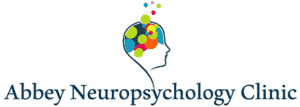In examining students’ strengths and weaknesses, it’s crucial to assess their cognitive abilities and emotional resilience. Understanding their academic strengths helps tailor teaching methods, fostering confidence and engagement. Identifying weaknesses allows targeted support, enhancing learning outcomes. Effective psychoeducational assessments encompass various domains: cognitive, academic, behavioral, and emotional. This holistic approach ensures a comprehensive understanding of students’ unique profiles, guiding educators and therapists in developing personalized strategies. By acknowledging both strengths and weaknesses sensitively, professionals can empower students to overcome challenges and thrive academically and emotionally.
Introduction to Student Assessment
In educational contexts, understanding the nuances of student strengths and weaknesses is crucial for providing effective support and maximizing learning potential. The introduction to student assessment sets the stage by highlighting the importance of comprehensive evaluations that go beyond academic performance.
It emphasizes the need to delve into cognitive abilities, behavioral patterns, social interactions, and emotional well-being to gain a holistic view of each student. By initiating this process, educators and professionals aim to tailor educational experiences to meet individual needs, fostering an environment where all students can thrive academically, socially, and emotionally.
Identifying Cognitive Strengths
Assessing cognitive strengths involves more than just evaluating academic achievements. It entails a nuanced exploration of cognitive processes such as reasoning, memory retention, and information processing speed. By identifying where a student excels cognitively, educators can leverage these strengths to enhance learning experiences and build confidence.
This assessment may involve standardized tests, observations in different learning contexts, and discussions with students and their guardians. By understanding cognitive strengths, educators can better customize teaching methods and educational strategies, ensuring that each student receives the support they need to succeed.
Exploring Academic Challenges
When exploring academic challenges, educators focus on identifying specific areas where students encounter difficulties. This process involves analyzing performance data, observing classroom interactions, and noting individual learning styles. By pinpointing these challenges early on, educators can develop targeted interventions to address gaps in knowledge or skills.
This may include personalized tutoring, modified assignments, or alternative teaching approaches tailored to suit individual learning preferences. Through continuous assessment and adjustment, educators aim to empower students to overcome academic challenges and achieve their full potential.
Behavioral Observations and Insights
Behavioral observations provide valuable insights into how students interact with their environment, peers, and learning tasks. Educators carefully document behavioral patterns, noting instances of engagement, distraction, collaboration, and independence. These observations help identify behavioral strengths that support learning as well as potential challenges that may hinder academic progress. By understanding the root causes of behavior, educators can implement strategies to foster positive behavioral change and improve overall classroom dynamics.
Comprehensive Documentation
Educators meticulously observe and document a wide range of behaviors in students, including their levels of engagement during lessons, tendencies towards distraction, ability to collaborate with peers, and their independence in completing tasks.
Identifying Strengths and Challenges
These observations allow educators to pinpoint specific behavioral strengths that contribute positively to learning outcomes, such as active participation and cooperative behavior. Simultaneously, they also uncover potential challenges like difficulty staying focused or reluctance to work independently.
Understanding Root Causes
By analyzing the root causes behind observed behaviors, educators gain deeper insights into the motivations and triggers that influence student actions. This understanding is crucial for developing targeted strategies that address behavioral issues effectively and promote positive changes in student conduct.
Implementing Effective Strategies
Based on their observations and understanding of behavioral dynamics, educators devise personalized strategies to support students. These strategies may include interventions aimed at enhancing engagement, fostering collaboration among peers, improving concentration skills, and promoting self-reliance in learning tasks.
Promoting Supportive Environments
Holistic behavioral observations contribute to cultivating nurturing and supportive learning environments. By addressing behavioral challenges proactively and reinforcing positive behaviors, educators create spaces where every student feels understood, encouraged, and empowered to succeed academically and socially.
Social and Emotional Competencies
Assessing social and emotional competencies involves evaluating a student’s ability to manage emotions, build relationships, and navigate social interactions. Educators consider factors such as empathy, self-awareness, and conflict resolution skills. By understanding these competencies, educators can support students in developing resilience, empathy, and effective communication skills.
This assessment may involve surveys, interviews, and behavioral assessments in various social settings. By nurturing social and emotional competencies, educators contribute to students’ overall well-being and academic success, preparing them to face challenges both inside and outside the classroom.
Environmental Factors and Learning
Environmental factors play a significant role in shaping a student’s learning experience. Educators consider how home environments, school culture, and community influences impact student development. By understanding these factors, educators can identify supportive resources and potential challenges that affect learning outcomes.
This assessment may involve collaboration with families, community stakeholders, and educational specialists to create a comprehensive support network. By addressing environmental factors, educators strive to create inclusive learning environments where every student feels valued and supported in achieving their academic goals.
Strategies for Individualized Support
Developing strategies for individualized support involves creating tailored interventions that address specific strengths and challenges identified through assessment. Educators collaborate with students, families, and educational specialists to design personalized learning plans. These plans may include differentiated instruction, specialized accommodations, and targeted interventions aimed at enhancing learning outcomes.
- Personalized Learning Plans: Develop tailored educational plans that cater to each student’s unique strengths, weaknesses, and learning styles.
- Differentiated Instruction: Adapt teaching methods and materials to accommodate varying academic abilities and preferences.
- Specialized Interventions: Implement targeted interventions to address specific challenges or enhance skills in areas such as reading comprehension or math problem-solving.
- Regular Progress Monitoring: Continuously assess student progress and adjust support strategies as needed to ensure ongoing improvement.
- Collaboration with Stakeholders: Foster partnerships with parents, guardians, and specialists to align support efforts across home and school environments for comprehensive student development.
Enhancing Educational Outcomes
Enhancing educational outcomes is a multifaceted endeavor that involves aligning various elements of the educational process to optimize student learning and growth. It begins with a comprehensive assessment of student strengths and weaknesses across cognitive, academic, behavioral, social, emotional, and environmental domains. By thoroughly understanding these aspects, educators can tailor instructional strategies and interventions to meet the diverse needs of students effectively.
This personalized approach not only addresses academic challenges but also nurtures students’ social and emotional competencies, fostering resilience and self-confidence. Moreover, creating a supportive learning environment where students feel valued and understood is crucial. Collaboration among educators, families, and community stakeholders further enhances outcomes by leveraging collective insights and resources. Ultimately, by continuously refining practices based on ongoing assessment and feedback, educators can ensure that every student has the opportunity to achieve academic success and thrive in their educational journey.
Conclusion
In exploring student strengths and weaknesses, Abbey Neuro Psychology Clinic emphasizes the importance of comprehensive assessments across cognitive, academic, behavioral, and emotional domains. By identifying individualized profiles, tailored interventions like personalized learning plans and differentiated instruction can effectively support each student’s growth. Regular progress monitoring and collaboration with families ensure continuous improvement and holistic development. For more insights on optimizing educational outcomes through tailored assessments, contact Abbey Neuro Psychology Clinic at 366 S. California Avenue, Suite 14 Palo Alto, CA 94306 or call 650-590-5743.






